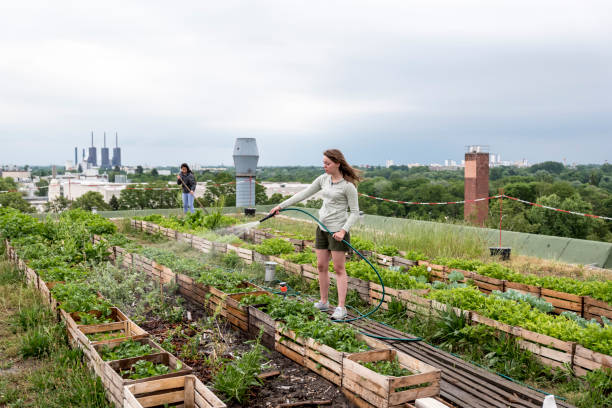Efficient rainwater capture techniques for outdoor irrigation
Collecting rainwater for garden irrigation reduces reliance on mains supply and creates a resilient water source for plants, containers, and lawns. Simple capture methods and thoughtful storage help maintain soil moisture, support perennials and bulbs, and promote healthier herbs and pollinator-friendly plantings while aligning with sustainable garden practices.

How does rainwater capture support irrigation?
Rainwater capture provides soft, untreated water ideal for irrigation systems such as drip lines, soaker hoses, and gravity-fed emitters. Captured water reduces the need for municipal water during dry spells and can be routed directly to planting beds or into storage tanks. When planning irrigation, size storage to match seasonal demand and the roof catchment area. Filters and first-flush diverters help keep sediment out of systems, while pressure regulators and simple timers let you use stored water efficiently for perennials, containers, and lawn areas.
What systems suit perennials and bulbs?
Perennials and bulbs benefit from consistent, moderate moisture rather than heavy, infrequent watering. Rainwater captured in barrels or cisterns can feed drip irrigation or soaker lines placed near root zones, reducing fungal risks associated with overhead sprinklers. For bulb beds, use low-flow emitters to avoid waterlogging while providing adequate soil moisture during bulb development. Consider sub-surface drip for long-term perennial borders; it delivers water to the root zone, economizes stored water, and supports steady flowering and root growth.
How does soil and compost affect storage needs?
Soil type strongly influences how much stored water you need. Sandy soils drain quickly and may require more frequent irrigation and larger storage relative to clay soils, which hold moisture but can become compacted. Incorporating compost improves soil structure and water-holding capacity, reducing irrigation frequency. When sizing a rainwater system, estimate evapotranspiration, plant water use, and amendments like compost. Mulch further cuts evaporation, making smaller tanks more effective and stretching captured water across dry periods.
Can containers and herbs benefit from captured rain?
Containers and herbs respond particularly well to rainwater because they lack buffering soil volume. Use portable barrels with tap outlets or a pump and hose to fill watering cans and drip-fed container rigs. Hanging baskets and small pots need more frequent attention; a rainfall-powered drip or simple timer can deliver measured doses. Rainwater’s lack of added chlorine and low mineral content helps sensitive herbs maintain better flavor and growth. Group containers by water needs to optimize use of stored water and avoid waste.
How to manage pests, pruning, and lighting with a capture system?
Regularly inspect stored water and collection surfaces to reduce mosquito breeding and debris build-up—use screened inlets and sealed lids. Proper pruning promotes air circulation reducing disease and limiting pest habitat, lessening overall water stress on plants. Low-voltage or solar garden lighting can be integrated with rainwater-fed irrigation schedules to create comfortable evening conditions without affecting water systems. Avoid applying contaminated runoff (from animal areas or oily roofs) to edible plants; route that water for non-food uses like irrigation of ornamentals.
How does rainwater capture support pollinators and sustainability?
Using rainwater supports sustainable landscaping by lowering mains consumption and reducing stormwater runoff that can carry pollutants. Providing steady moisture encourages native perennials and herbs that attract pollinators, particularly during dry spells when nectar is scarce. Design systems to prioritize planting zones that benefit pollinators—native flowers and clustered herbs near water sources. Rain gardens and infiltration basins combined with capture tanks both conserve water and create habitat for beneficial insects, aligning irrigation practices with broader sustainability goals.
Conclusion
Implementing rainwater capture for outdoor irrigation combines practical water savings with plant health benefits. By matching system design—barrels, cisterns, drip lines—to soil type, plant groups (perennials, bulbs, herbs), and site constraints, gardeners can reduce mains dependence and support pollinator-friendly plantings. Proper maintenance, filtration, and sensible placement keep pests and debris in check while maximizing the usefulness of stored water. Thoughtful integration of compost, mulches, and efficient irrigation techniques helps gardens thrive more sustainably.





